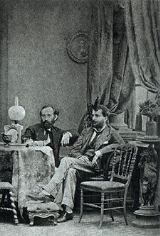
Alberto Henschel
Encyclopedia
Alberto Henschel was a German-Brazilian
photographer born in Berlin
. Considered the hardest-working photographer and businessman in 19th-century Brazil
, with offices in Pernambuco
, Bahia
, Rio de Janeiro
, and São Paulo
, Henschel was also responsible for the presence of other professional photographers in the country, including his compatriot Karl Ernest Papf
—with whom he later worked.
Henschel became known for making pictorial representations of Rio de Janeiro as a landscaper photographer and for being an excellent portraitist. He earned the title of Photographo da Casa Imperial (Photographer of the Royal House), allowing him to photograph the everyday life of the Brazilian monarchy during the Reign of Pedro II, even photographing the emperor Dom Pedro II
and his family. This title would give his photographs increased recognition and raise their price.
But his principal contribution to the history of Brazilian photography is his photographic record of the different social classes in Brazil in the 19th century: portraits, usually in the carte de visite
format, taken of the nobility, of rich tradesmen, of the middle-class, and of black people
, either slave
s or free, in a period before the Lei Áurea
.
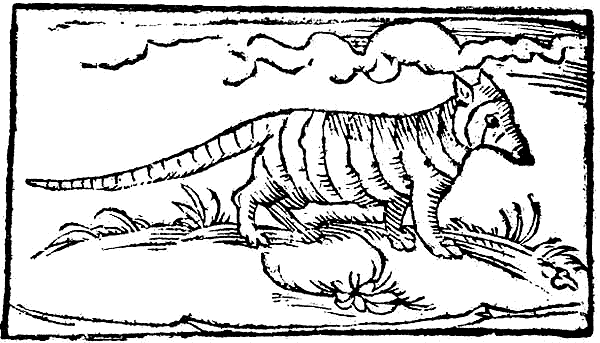 As soon as the first world maps showing Brazil were printed in the Renaissance
As soon as the first world maps showing Brazil were printed in the Renaissance
era of Albrecht Dürer
, the recently discovered country aroused the interest of the German public. Among the first attractions were the enthusiastic descriptions and illustrations of the Indians
, the exotic landscapes, the abundance of wild animals and the new species of plants first conveyed in the works of Hans Staden
. This was followed by the writings of adventurers and scientists such as Johann Baptist Emanuel Pohl
, author of Viagem no Interior do Brasil, Empreendida nos Anos de 1817 a 1821 e Publicada por Ordem de Sua Majestade o Imperador da Áustria Francisco Primeiro (Voyage in the Interior of Brazil. Launched in the Years of 1817 to 1821 and Published by the Order of His Majesty the Emperor of Austria Franscisco First), in which he describes his journey through the country with wonder and enthusiasm, his words accompanied by luxuriant illustrations. About Rio de Janeiro, Pohl wrote:
Certainly these narrations and illustrations were the principal attractions for those German photographers of the 19th century that moved to Brazil, such as Revert Henrique Klumb
, Augusto Stahl
, Karl Ernest Papf, and Alberto Henschel.
to Brazil.
It has been assumed that Alberto Henschel also met the photographer Francisco Benque
while still in Germany, with whom he had a successful, but short-lived, relationship in Brazil.
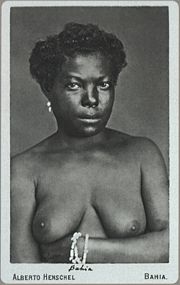 Henschel and his associate Karl Heinrich Gutzlaff disembarked in Recife
Henschel and his associate Karl Heinrich Gutzlaff disembarked in Recife
in May 1866, intending to create a photographic studio on Imperador street, number 38. Initially named Alberto Henschel & Cia, the studio became Photographia Allemã (German Photography), next changing to a new address on the Matriz de Santo Antônio square, number 2. Because he was able to build up his business quickly when he came, it is assumed that Henschel was already an experienced photographer and intended to build a promising business in photography in this new market that was still so little explored.
In 1867, Henschel separated from Gutzlaff and returned to Germany where he updated his technique and acquired new equipment for his atelier of photography. He returned to Brazil in the same year, opening another establishment with the same company name in the city of Salvador, on Piedade street, number 16. By opening three establishments in only two years, Henschel was thought of as the most audacious and sagacious photographic businessman in 19th century Brazil.
By the end of the 1860s, Henschel's houses of Recife and Salvador were already making portraits of people of African origin, slaves and free, differing from other photographers by portraying them freely and with dignity as people and not as objects.
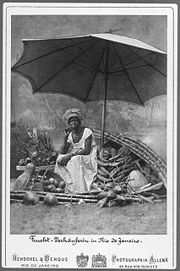 Because of the quality of his work and his success in the Court, Henschel received the title of Photographo da Casa Imperial (Photographer of the Royal House) on 7 September 1874, together with Benque, which would give his photographs increased recognition and raise their price. The historian photographer Gilberto Ferrez describes the quality and importance of Henschel as follows:
Because of the quality of his work and his success in the Court, Henschel received the title of Photographo da Casa Imperial (Photographer of the Royal House) on 7 September 1874, together with Benque, which would give his photographs increased recognition and raise their price. The historian photographer Gilberto Ferrez describes the quality and importance of Henschel as follows:
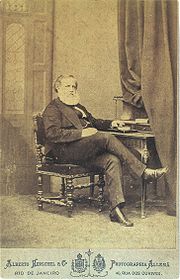 Henschel participated in many exhibitions of photographs, standing out in the exposition of the Imperial Academy of Fine Arts in 1872 and 1875, for which he received the Gold Medal in the first edition. He also participated in the IV National Exposition and the Universal Exposition of Vienna, in Austria, where he received the Merit Medal.
Henschel participated in many exhibitions of photographs, standing out in the exposition of the Imperial Academy of Fine Arts in 1872 and 1875, for which he received the Gold Medal in the first edition. He also participated in the IV National Exposition and the Universal Exposition of Vienna, in Austria, where he received the Merit Medal.
. His arrival in São Paulo was considered important because, besides being holder of the prestigious title of Photographo da Casa Imperial, he came directly from the Court. The newspaper A Província de São Paulo (currently O Estado de S. Paulo
), while describing with minimal details the new atelier in its inaugural day edition, related the enthusiasm with which Henschel was received by the residents of São Paulo.
Henschel died in Rio de Janeiro
that same year, only some months after establishing himself in São Paulo. However, his companies, under the command of other businessmen, continued to strategically use his name for many years, taking advantage of the great prestige that the mark "Henschel" had acquired.
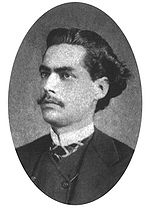 Henschel was considered the hardest-working photographer and businessman in 19th-century Brazil. He always remained up-to-date with the latest techniques on the photography market. By the time the aesthetic format of photography carte de visite became popular, Henschel was already dominating this technique which he used frequently in his establishments.
Henschel was considered the hardest-working photographer and businessman in 19th-century Brazil. He always remained up-to-date with the latest techniques on the photography market. By the time the aesthetic format of photography carte de visite became popular, Henschel was already dominating this technique which he used frequently in his establishments.
His studios possessed the latest equipment appropriate for the instantaneous portraits of children who, never still, were the headaches of the photographers. In his announcement in the Novo Almanach de São Paulo para o Anno de 1883 (New Almanac of São Paulo for the Year of 1883), Henschel advertised:
The new process referred to in the announcement was the use of dry slabs of transparent gelatin, used as an adhesive layer for the fixation of the silver salts over the paper.
He photographed all the different social classes of Brazil in the 19th century. Besides the Brazilian monarchy and black people, he also photographed the nobility, the rich tradesmen and their families, and the white middle-class.
German-Brazilian
A German Brazilian is a Brazilian person of ethnic German ancestry or origin...
photographer born in Berlin
Berlin
Berlin is the capital city of Germany and is one of the 16 states of Germany. With a population of 3.45 million people, Berlin is Germany's largest city. It is the second most populous city proper and the seventh most populous urban area in the European Union...
. Considered the hardest-working photographer and businessman in 19th-century Brazil
Brazil
Brazil , officially the Federative Republic of Brazil , is the largest country in South America. It is the world's fifth largest country, both by geographical area and by population with over 192 million people...
, with offices in Pernambuco
Pernambuco
Pernambuco is a state of Brazil, located in the Northeast region of the country. To the north are the states of Paraíba and Ceará, to the west is Piauí, to the south are Alagoas and Bahia, and to the east is the Atlantic Ocean. There are about of beaches, some of the most beautiful in the...
, Bahia
Bahia
Bahia is one of the 26 states of Brazil, and is located in the northeastern part of the country on the Atlantic coast. It is the fourth most populous Brazilian state after São Paulo, Minas Gerais and Rio de Janeiro, and the fifth-largest in size...
, Rio de Janeiro
Rio de Janeiro
Rio de Janeiro , commonly referred to simply as Rio, is the capital city of the State of Rio de Janeiro, the second largest city of Brazil, and the third largest metropolitan area and agglomeration in South America, boasting approximately 6.3 million people within the city proper, making it the 6th...
, and São Paulo
São Paulo
São Paulo is the largest city in Brazil, the largest city in the southern hemisphere and South America, and the world's seventh largest city by population. The metropolis is anchor to the São Paulo metropolitan area, ranked as the second-most populous metropolitan area in the Americas and among...
, Henschel was also responsible for the presence of other professional photographers in the country, including his compatriot Karl Ernest Papf
Karl Ernest Papf
Karl Ernest Papf was a German painter, and draftsman that moved to Brazil in 1867.-Life:He studied in the Academy of Fine Arts of Dresden and in 1867, was hired for the profession of photographer by the firm of his compatriot Albert Henschel...
—with whom he later worked.
Henschel became known for making pictorial representations of Rio de Janeiro as a landscaper photographer and for being an excellent portraitist. He earned the title of Photographo da Casa Imperial (Photographer of the Royal House), allowing him to photograph the everyday life of the Brazilian monarchy during the Reign of Pedro II, even photographing the emperor Dom Pedro II
Pedro II of Brazil
Dom Pedro II , nicknamed "the Magnanimous", was the second and last ruler of the Empire of Brazil, reigning for over 58 years. Born in Rio de Janeiro, he was the seventh child of Emperor Dom Pedro I of Brazil and Empress Dona Maria Leopoldina and thus a member of the Brazilian branch of...
and his family. This title would give his photographs increased recognition and raise their price.
But his principal contribution to the history of Brazilian photography is his photographic record of the different social classes in Brazil in the 19th century: portraits, usually in the carte de visite
Carte de visite
The carte de visite was a type of small photograph which was patented in Paris, France by photographer André Adolphe Eugène Disdéri in 1854, although first used by Louis Dodero...
format, taken of the nobility, of rich tradesmen, of the middle-class, and of black people
Black people
The term black people is used in systems of racial classification for humans of a dark skinned phenotype, relative to other racial groups.Different societies apply different criteria regarding who is classified as "black", and often social variables such as class, socio-economic status also plays a...
, either slave
Slavery
Slavery is a system under which people are treated as property to be bought and sold, and are forced to work. Slaves can be held against their will from the time of their capture, purchase or birth, and deprived of the right to leave, to refuse to work, or to demand compensation...
s or free, in a period before the Lei Áurea
Lei Áurea
The Lei Áurea , adopted on May 13, 1888, was the law that abolished slavery in Brazil.It was preceded by the Rio Branco Law of September 28, 1871 , which freed all children born to slave parents, and by the Saraiva-Cotegipe Law , of September 28, 1885, that freed slaves when they reached the age of...
.
Antecedents

Renaissance
The Renaissance was a cultural movement that spanned roughly the 14th to the 17th century, beginning in Italy in the Late Middle Ages and later spreading to the rest of Europe. The term is also used more loosely to refer to the historical era, but since the changes of the Renaissance were not...
era of Albrecht Dürer
Albrecht Dürer
Albrecht Dürer was a German painter, printmaker, engraver, mathematician, and theorist from Nuremberg. His prints established his reputation across Europe when he was still in his twenties, and he has been conventionally regarded as the greatest artist of the Northern Renaissance ever since...
, the recently discovered country aroused the interest of the German public. Among the first attractions were the enthusiastic descriptions and illustrations of the Indians
Indigenous peoples
Indigenous peoples are ethnic groups that are defined as indigenous according to one of the various definitions of the term, there is no universally accepted definition but most of which carry connotations of being the "original inhabitants" of a territory....
, the exotic landscapes, the abundance of wild animals and the new species of plants first conveyed in the works of Hans Staden
Hans Staden
Hans Staden was a German soldier and mariner who voyaged to South America. On one voyage, he was captured by the Tupinambá people of Brazil whom he claimed practiced cannibalism...
. This was followed by the writings of adventurers and scientists such as Johann Baptist Emanuel Pohl
Johann Baptist Emanuel Pohl
Johann Baptist Emanuel Pohl was an Austrian botanist, entomologist, geologist, and physician.Johan Emanuel Pohl grew up in , studied in Prague and graduated as Doctor of Medicine in 1808....
, author of Viagem no Interior do Brasil, Empreendida nos Anos de 1817 a 1821 e Publicada por Ordem de Sua Majestade o Imperador da Áustria Francisco Primeiro (Voyage in the Interior of Brazil. Launched in the Years of 1817 to 1821 and Published by the Order of His Majesty the Emperor of Austria Franscisco First), in which he describes his journey through the country with wonder and enthusiasm, his words accompanied by luxuriant illustrations. About Rio de Janeiro, Pohl wrote:
If some place in the New World deserves, for its location and natural conditions, to become one day a theater of big events, a center of civilization and culture, an emporium of worldwide commerce, it is, in my opinion, Rio de Janeiro. I cannot, here, repress this observation. Willingly hovers the fantasy on the future of such charming country, that is at present little developed and, so to speak, does not have a past.
—Johann Emmanuel Pohl
Certainly these narrations and illustrations were the principal attractions for those German photographers of the 19th century that moved to Brazil, such as Revert Henrique Klumb
Revert Henrique Klumb
Revert Henrique Klumb was a renowned German-Brazilian photographer who operated in Brazil in the 19th century. Probably the introducer of the stereoscopic photography in the country, Klumb obtained the title of Photographo da Casa Imperial in Rio de Janeiro...
, Augusto Stahl
Augusto Stahl
Theóphile Auguste Stahl or simply Augusto Stahl, as he was known in Brazil, was a German-Brazilian photographer that lived during the 19th century. Born in Bergamo, in Italy, son of a Lutheran priest, Stahl disembarked in Recife on December 31, 1853, on board the ship Thames, of the Royal English...
, Karl Ernest Papf, and Alberto Henschel.
In Germany
Alberto Henschel was born 13 June 1827 in Berlin to Moritz and Helene Henschel. Moritz and his brothers August, Friedrich, and Wilhelm, of Jewish origin, had arrived in Berlin around 1806. They were recognized as engravers and signed their works as Henschel Brothers. There are no records of Alberto Henschel's person or professional life in Germany or his reasons for emigratingEmigration
Emigration is the act of leaving one's country or region to settle in another. It is the same as immigration but from the perspective of the country of origin. Human movement before the establishment of political boundaries or within one state is termed migration. There are many reasons why people...
to Brazil.
It has been assumed that Alberto Henschel also met the photographer Francisco Benque
Franz Benque
Franz Benque , known in Brazil as Francisco Benque, was a German photographer.Son of a professor, Benque was born in Ludwigslust, nowadays a city located in the Ludwigslust-Parchim district in Mecklenburg-Vorpommern, northern Germany. He received lessons of photography from C.C...
while still in Germany, with whom he had a successful, but short-lived, relationship in Brazil.
1860s

Recife
Recife is the fifth-largest metropolitan area in Brazil with 4,136,506 inhabitants, the largest metropolitan area of the North/Northeast Regions, the 5th-largest metropolitan influence area in Brazil, and the capital and largest city of the state of Pernambuco. The population of the city proper...
in May 1866, intending to create a photographic studio on Imperador street, number 38. Initially named Alberto Henschel & Cia, the studio became Photographia Allemã (German Photography), next changing to a new address on the Matriz de Santo Antônio square, number 2. Because he was able to build up his business quickly when he came, it is assumed that Henschel was already an experienced photographer and intended to build a promising business in photography in this new market that was still so little explored.
In 1867, Henschel separated from Gutzlaff and returned to Germany where he updated his technique and acquired new equipment for his atelier of photography. He returned to Brazil in the same year, opening another establishment with the same company name in the city of Salvador, on Piedade street, number 16. By opening three establishments in only two years, Henschel was thought of as the most audacious and sagacious photographic businessman in 19th century Brazil.
By the end of the 1860s, Henschel's houses of Recife and Salvador were already making portraits of people of African origin, slaves and free, differing from other photographers by portraying them freely and with dignity as people and not as objects.
1870s
In 1870, Henschel opened another subsidiary of his atelier, this time in Rio de Janeiro, on Ourives street (nowadays Miguel Couto street, number 40). It was in Rio, capital of the Empire, where he started his prosperous partnership with Francisco Benque. With the name of Henschel & Benque, it specialized in the production and marketing of portraits, landscapes, and the photopaintings made by Karl Ernest Papf, whose presence in Brazil was due to Henschel. There are no records dating when the relationship with Benque crumbled; it is probable that their association remained until 1880.
Henschel photographed Rio and its surroundings [...]. He made landscapes, but above all he was a distinguished portraitist. There is almost no family album where no portraits of grandparents were done by Alberto Henschel.
—Gilberto Ferrez

1880s
On 1 February 1882, Henschel inaugurated another establishment, this time in the capital of the province of São Paulo. He gave it the name Photographia Imperial (Imperial Photography) because the name Photographia Allemã had already been used since 1875 by the atelier of the photographer Carlos HoenenCarlos Hoenen
Carlos Hoenen was a German photographer who lived in Brazil during the 19th century. Little is known about his biography, only that he kept an atelier of photography in São Paulo called Photographia Allemã . Inaugurated in 1875, it remained active during ten years, a period in which it is presumed...
. His arrival in São Paulo was considered important because, besides being holder of the prestigious title of Photographo da Casa Imperial, he came directly from the Court. The newspaper A Província de São Paulo (currently O Estado de S. Paulo
O Estado de S. Paulo
O Estado de S. Paulo is a daily newspaper published in the Metropolitan region of São Paulo, Brazil, and distributed mainly nationally. It is owned by Grupo Estado, a holding company which publishes the Jornal da Tarde and owns the radios Rádio Eldorado AM and FM and the Agência Estado, largest...
), while describing with minimal details the new atelier in its inaugural day edition, related the enthusiasm with which Henschel was received by the residents of São Paulo.
Henschel died in Rio de Janeiro
Rio de Janeiro
Rio de Janeiro , commonly referred to simply as Rio, is the capital city of the State of Rio de Janeiro, the second largest city of Brazil, and the third largest metropolitan area and agglomeration in South America, boasting approximately 6.3 million people within the city proper, making it the 6th...
that same year, only some months after establishing himself in São Paulo. However, his companies, under the command of other businessmen, continued to strategically use his name for many years, taking advantage of the great prestige that the mark "Henschel" had acquired.
Technique

His studios possessed the latest equipment appropriate for the instantaneous portraits of children who, never still, were the headaches of the photographers. In his announcement in the Novo Almanach de São Paulo para o Anno de 1883 (New Almanac of São Paulo for the Year of 1883), Henschel advertised:
This establishment just received from Europe the negatives for the new process of instantaneous photographies that have so much success there. Through these chichets one can obtain a more perfect portrait of a moving child, of nervous people... The public is invited to come examine in the establishment some portraits obtained by the new process.
The new process referred to in the announcement was the use of dry slabs of transparent gelatin, used as an adhesive layer for the fixation of the silver salts over the paper.
He photographed all the different social classes of Brazil in the 19th century. Besides the Brazilian monarchy and black people, he also photographed the nobility, the rich tradesmen and their families, and the white middle-class.
Footnotes
- Some biographies state that he died in São PauloSão PauloSão Paulo is the largest city in Brazil, the largest city in the southern hemisphere and South America, and the world's seventh largest city by population. The metropolis is anchor to the São Paulo metropolitan area, ranked as the second-most populous metropolitan area in the Americas and among...
. - There are biographical records that indicate the year of 1881 instead of 1882.

